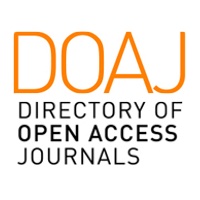OPTIMIZATION OF PUMPKIN FLOUR IN BREAD TECHNOLOGY
DOI:
https://doi.org/10.31395/2310-0478-2022-1-82-88Keywords:
pumpkin flour, bread, baking, shrinkage, volume, weightAbstract
Bread and bakery products are widely used as basic food around the world. Recently, bakery products have been widely researched to develop functional foods by enriching active ingredients such as dietary fiber, biologically active peptides, minerals, vitamins, etc. to increase their nutritional and biological value. Bakery products are diversified by adding new ingredients. Laboratory and mathematical-statistical methods were used for research. The use of pumpkin flour for bread enrichment was analyzed. It was found that bread baking rate varied from 13.3±0.3% to 13.8±0.3% depending on the experiment variant. Variation coefficients of the samples were less than 3. Bread drying varied from 5.1±0.4% to 5.3±0.3 depending on the experiment variant. The sample variation was insignificant, but this indicator approached 10% and ranged from 4.5 to 7.2. Data samples from analytical replicates of the bread volume indicator had better quality indicators compared to shrinkage, which was due to insignificant data variation. There was a noticeable change in volume indicator depending on the research option from 158±3 cm3/100 g of dough to 220±3 cm3/100 g of dough. An increase in the proportion of pumpkin flour in bread resulted in volume decrease. Product volume changed similarly compared to 100 g of a mixture of wheat flour and pumpkin flour. Variation coefficients of these samples were quite low (coef V = 0.35–1.36). Similar to the previous product volume, the specific volume of dough and bread has changed. Sample variation of analytical replicates was insignificant (coef V = 0.78–2.00). Bread weight from 100 g of flour did not change significantly depending on the experiment variant, and the samples of analytical repetitions did not vary significantly. There have been noticeable changes in bread volume to dough volume. Depending on the experiment variant, bread volume varied from 2.1±0.02 (control) to 1.5±0.04 (20). The probability of sample variation of analytical replicates was quite low. Product convexity decreased from 0.48±0.02 (5) to 0.45±.02 (20) depending on the experiment variant. The variation of the sample data was insignificant (coef V = 2.12–4.44). The obtained results of primary statistical processing indicate high quality indicators and determine the possibility of data using for further statistical processing.
References
Mudgil D., Barak S., Khatkar B. S. Optimization of bread firmness, specific loaf volume and sensory acceptability of
bread with soluble fiber and different water levels. Journal of Cereal Science. 2016. Vol. 70 no. 7. P. 186–191.
Любич В. В., Полянецька І. О. Якість цілої крупи із зерна спельти залежно від індексу лущіння та водно-теплової обробки. Вісник Уманського НУС. 2015. № 2. С. 34–39.
Aziah N. A., Komathi, C. A. Acceptability attributes of crackers made from different types of composite flour. International Food Research Journal. 2009. №16. P. 479–
Любич В. В., Лещенко І. А. Вихід і якість цілої крупи із зерна пшениці полби залежно від консистенції ендосперму та водотеплового оброблення. Вісник аграрної
науки Причорномор’я. 2020. Вип. 2 (106). С. 71–79.
Dhingra et al. Dietary fibre in foods:a review. Journal of food science and technology. 2012. Vol. 49. № 3. P. 255–266.
Tosh S. M., Yada S. Dietary fibres in pulse seeds and fractions: Characterization, functional attributes, and applications. Food Research International. 2010 Vol. 43. № 2. P. 450–460.
Liubych V. V. et al. Improvement of the process of hydrothermal treatment and peeling of spelt wheat grain during cereal production. Eastern-European Journal of
Enterprise Technologies. 2019. Vol. 3(11). С. 40–51.
Dhingra et al. Dietary fibre in foods: a review. Journal of food scienceand technology. 2012. Vol. 49. № 3. P. 255–266.
Kuchtová et al. Chemical composition and functional properties of pumpkin pomace-incorporated crackers. Acta Chimica Slovaca. 2016. Vol. 9. № 1. P. 54–57.
Любич В. В., Желєзна В. В., Грабова Д. М. Оцінювання якості кексу з добавлянням до борошна тритикале гарбузового пюре. Trends and prospects development of
science and practice in modern environment. Abstracts ofX International Scientific and Practical Conference. Geneva, Switzerland. 2021. С. 357–362.
Minarovičová, L., et al. 2017. Effect of pumpkin powder incorporation on cooking and sensory parameters of pasta. Potravinarstvo Slovak Journal of Food Sciences.
Vol. 11. no. 1. P. 373–377.
Pongjanta J. et al. Effect of processing and drying treatmenton quality of pumpkin powder. Food Journal. 2003. Vol. 33. Р. 68–76.
Pongjanta J. et al. The utilization ofpumpkin powder in Thai Sweetmeal. Food Journal. 2004. Vol. 34. Р. 80–89.
Sara M. S., Amira M. Evaluation of Physical and Sensory Characteristics of Jam and Cake Processed Using Pumpkin (Cucurbita moschata) Middle East. Journal of Applied Sciences. 2018. Vol. 8. P. 295–306.
Pongjanta J. et al. Utilization of pumpkin powder in bakery products Songklanakarin. J. Sci. Technol. 2006. Vol. 28 (Suppl. 1). Р. 71–79.
Любич В. В., Желєзна В. В., Грабова Д. М. Якість кексів з тритикале, збагаченого пастою гарбузовою. Збірник наукових праць Уманського національного університету садівництва. 2021. Вип. 2. С. 17–28.
Bhat M. A., Bhat A. 2013. Study on Physico-Chemical Characteristics of Pumpkin Blended Cake. Food Processing & Technology. Vol. 4 (9). Р. 1–4.
Kulkarni A. S., Joshi D. C. Effect ofreplacement of wheat flour with pumpkin powder ontextural and sensory qualities of biscuit. International Food Research Journal. 2013. Vol. 20 (2). Р. 587–591.
Minarovičová L. et al. Utilization of pumpkin powder in baked rolls. Potravinarstvo Slovak Journal of Food Sciences. 2018. Vol. 12. № 1. P. 195–201.
Дубовой В. М. та ін. Моделювання та оптимізація систем. Вінниця: ПП «ТД«Еднльвейс». 2017. 804 с.
Поперечний А. М., Потапов В. О., Корнійчук В. Г. Моделювання процесів та обладнання харчових виробництв. Київ: Центр учбової літератури, 2012. 312 с.
Остапчук М. В., Станкевич Г. М. Математичне моделювання на ЕОМ. Одеса: Друк, 2010. 313 с.
Bojnanská T., Mocko K. Bread-making quality of Slovak and Serbian wheat varieties. The Journal of Microbiology, Biotechnology and Food Sciences. 2014. Vol. 3. № 3. P. 190–194.








